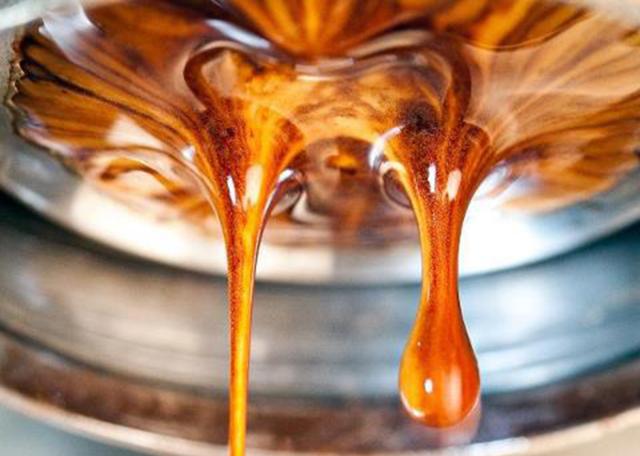Bold speculation: the so-called coffee bean cultivation period exhaust only for hand siphon does not include Italian coffee beans?

Professional coffee knowledge exchange more coffee bean information please follow the coffee workshop (Wechat official account cafe_style)
The correct way to raise beans how long is the period of raising coffee beans? Why raise beans?
Coffee is roasted with raw beans and ripe beans.
The carbon dioxide accumulated in ripe beans will begin to emit.
Usually when baked, beans will be raised for a few days first.
On the one hand, let the carbon dioxide be discharged properly.
On the one hand, it also allows the various chemicals in the cooked beans to continue to be transformed into mature.
The cooked beans in the sealed jar continue to discharge carbon dioxide, filling the whole container.
This also helps ripe beans avoid oxidation.
Sum up according to past experience
Exuberant exhaust a few days ago
After five days to a week, the exhaust begins to ease up.
During exhaust, the oil in the cooked bean cells will also be pushed to the surface.
Make the coffee beans appear in the shape of oil.
When the gas is completely exhausted,
This is about 20 days after baking.
Then the whole coffee looks [glowing].
The beans that will taste fresh by hand will be mild and sweet.
But it is no longer suitable for cooking ESPRESSO.
Because CREMA needs carbon dioxide and oil in coffee bean cells as "raw materials".
Without carbon dioxide, a standard ESPRESSO machine cannot cook CREMA.
Instead, it is a partially inexpensive machine equipped with the so-called CREMA enhancement technology.
You can also make some "virtual CREMA" of such beans.
After the discharge of carbon dioxide
Coffee beans lose the protection of carbon dioxide
Begin to come into contact with oxygen and oxidize
As a result, open the sealed cans a few more times, and the bright coffee beans begin to produce the smell of Artemisia annua.
This will happen about a month or so after baking.
Speculate boldly
The so-called exhaust during the cultivation of beans
In fact, it should be needed for hand brewing or SYPHONE coffee.
For ESPRESSO beans, exhaust should be reduced as much as possible during bean cultivation.
In order to leave the oil and carbon dioxide needed by CREMA in the coffee cells.
Of course, that's just my hypothesis.
Since it is a hypothesis, it needs to be verified by experiments.
So I did the following experiments.
Objective: to observe the relationship between CREMA and exhaust and time during soybean cultivation.
Separate the same pot of beans:
Group A (45g): sealed storage after baking and cooling, 15th day, 25th day trial cooking
Group B (45g): baked and cooled, sealed after one day of exhaust, and boiled on the 15th and 25th day.
Group C (90g): baked and cooled, sealed after one day of exhaust, and boiled on the 3rd, 5th, 10th, 15th and 25th day.
Group D (90g): after baking and cooling, seal, open the lid once a day, and cook on the 3rd, 5th, 10th, 15th and 25th day.
Coffee bakeries usually use coffee ribbons with exhaust valves to encapsulate cooked beans.
When carbon dioxide is continuously discharged and the pressure in the bag rises.
The one-way exhaust valve will open, reducing the pressure in the bag.
So that the exhaust of cooked beans will not be hindered.
On the contrary
The pressure of the sealed tank cannot be discharged, so the exhaust of cooked beans will be suppressed.
The point is, is inhibition a good thing or a bad thing for each stage?
According to our coffee drinking habits, do we need to restrain or allow continuous exhaust?
Test run on the first day as a reference
Weight of cooked beans: 9g
Grinding scale: vario macro 0 + micro 14
Description:
1. The extraction quantity is insufficient, so the scale of the trial cooking should be adjusted to micro 16.
two。 I thought there would be too much crema on the day of baking, but the result was unexpected.
On the third day, 9: 00.
Group C and D take 9 grams each.
There is C on the left and D on the right in the picture.
The difference in color is related to the angle of the table lamp.
Grinding scale: vario macro 0 + micro 16
Description:
The above two photos
Sample C and D have the same grinding and extraction conditions.
The amount of CREMA extracted is about the same.
The total extraction amount of D is a little more.
But pay attention to the color of the coffee coming out of the shunt mouth.
It can be found that the color of C is uniform and that of D is obviously different.
After observing pressed powder, it was found that there was some microperforation effect in D extraction.
Therefore, the large amount of extraction should be caused by careless filling and pressing.
So the conclusion is that there is no significant difference on the third day.
On the fifth day, 9pm 3
It can be clearly seen in the photo
On the fifth day,
Open the lid every day and turn over the breathable sample D.
The situation of oil production is more obvious than that of sample C, which only opened the lid on the third day.
Try cooking again under the same conditions.
The result was different from what I had expected, so I tried to cook it again.
The result was the same: on the fifth day, the extraction of sample D was better than that of sample C.
The sample C of the fifth day is similar to that of the third day.
This is quite reasonable. Maybe their exhaust conditions are similar.
On the tenth day, 9 + 8
This is fun!
At the end of the experiment, will my conclusion become-- just find a jar to fill the cooked beans?
.
Important Notice :
前街咖啡 FrontStreet Coffee has moved to new addredd:
FrontStreet Coffee Address: 315,Donghua East Road,GuangZhou
Tel:020 38364473
- Prev

How to make coffee beans? How to determine the coffee growing period?
Professional coffee knowledge exchange More coffee bean information Please pay attention to coffee workshop (Weixin Official Accounts cafe_style) How long is the correct way to raise beans? Why beans? Roasted coffee beans.. How to grow beans? It's a direct exposure to the air. Or put it in an airtight container.. How long is the best time to grow beans? My experience is to put it in cooler dry
- Next

The efficacy of bean cultivation and the time of coffee cultivation period: details about coffee cultivation
Professional coffee knowledge exchange more coffee bean information please pay attention to the coffee workshop (Wechat official account cafe_style) the correct way to grow beans how long is the coffee bean growing period? Why raise beans? There is a famous saying in the movie Golden Secret Service (Kingsman): etiquette, extraordinary achievements. (Manners maketh man.), from the point of view of coffee cooked beans, it can be said to be: growing beans.
Related
- Beginners will see the "Coffee pull flower" guide!
- What is the difference between ice blog purified milk and ordinary milk coffee?
- Why is the Philippines the largest producer of crops in Liberia?
- For coffee extraction, should the fine powder be retained?
- How does extracted espresso fill pressed powder? How much strength does it take to press the powder?
- How to make jasmine cold extract coffee? Is the jasmine + latte good?
- Will this little toy really make the coffee taste better? How does Lily Drip affect coffee extraction?
- Will the action of slapping the filter cup also affect coffee extraction?
- What's the difference between powder-to-water ratio and powder-to-liquid ratio?
- What is the Ethiopian local species? What does it have to do with Heirloom native species?

